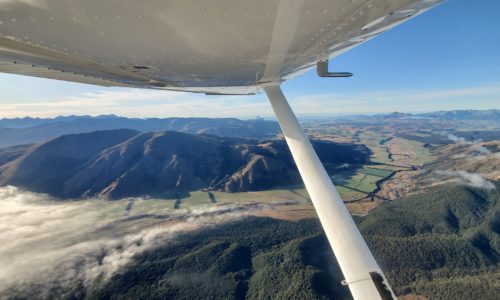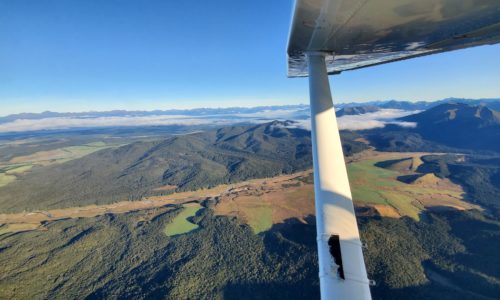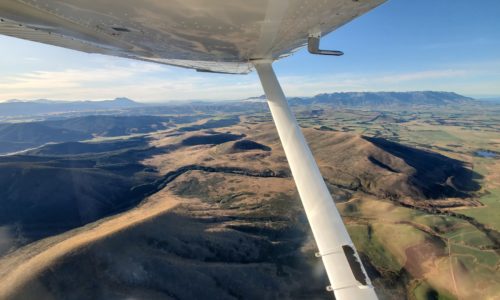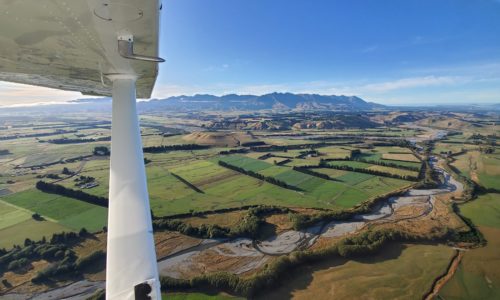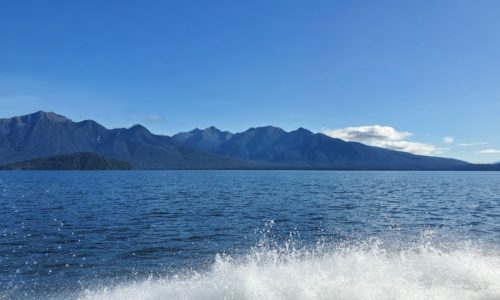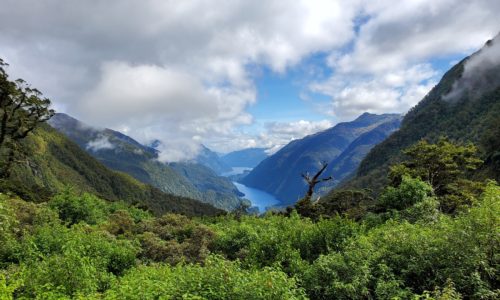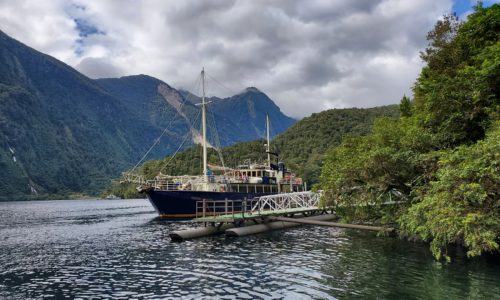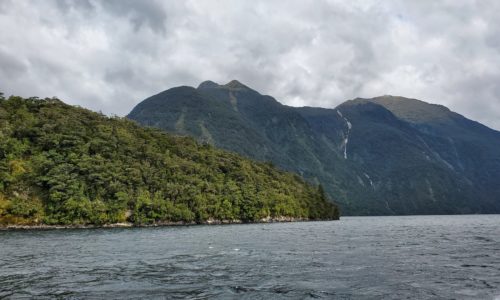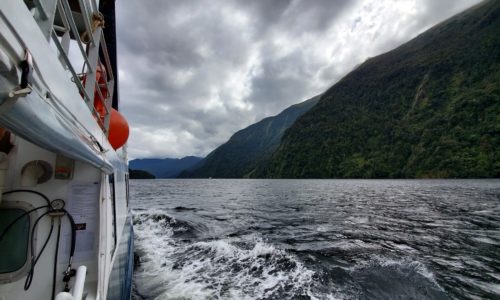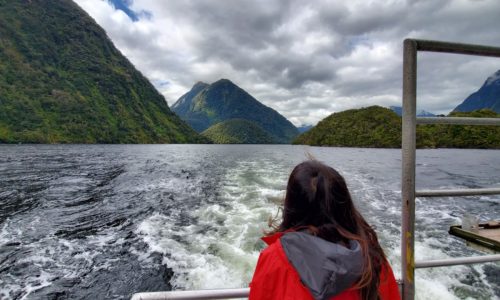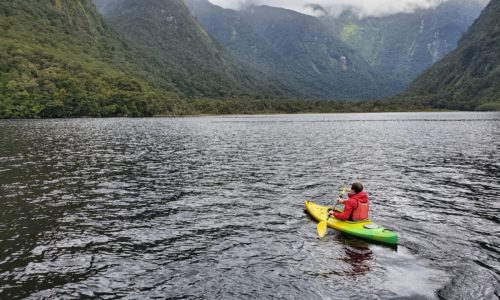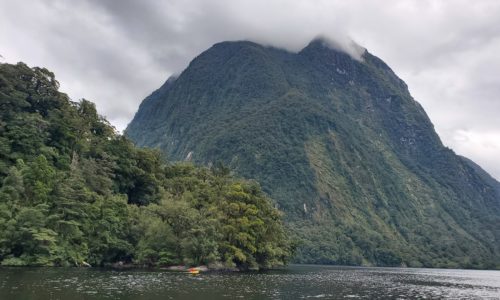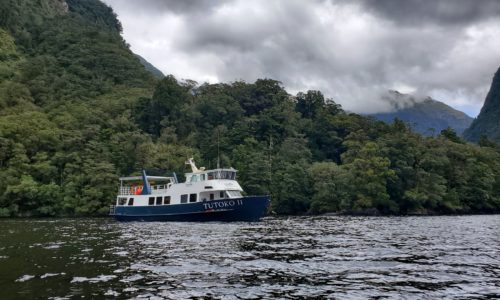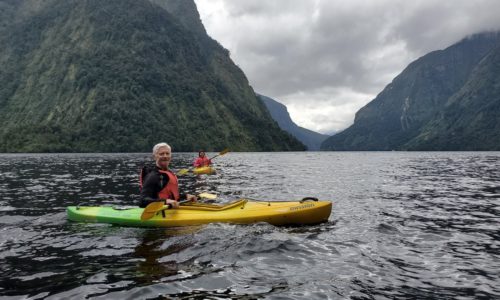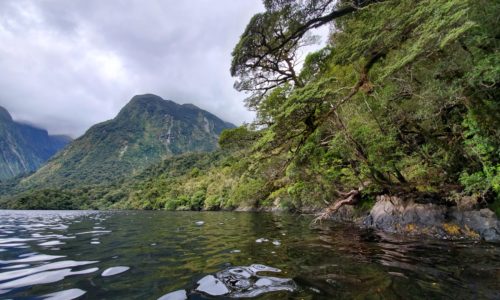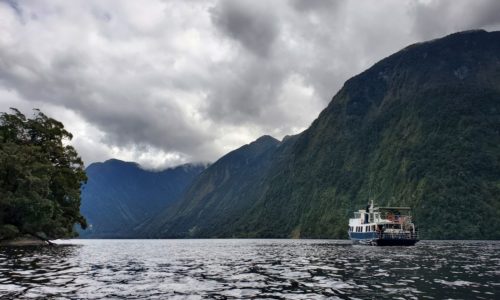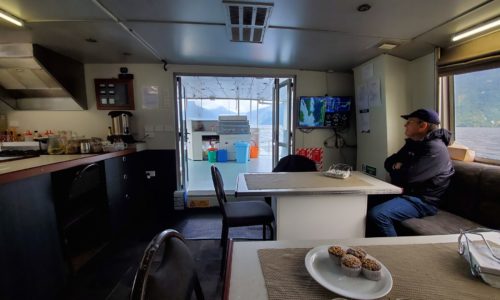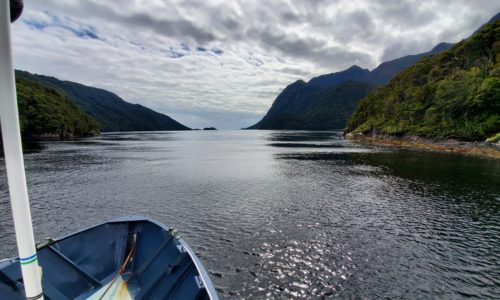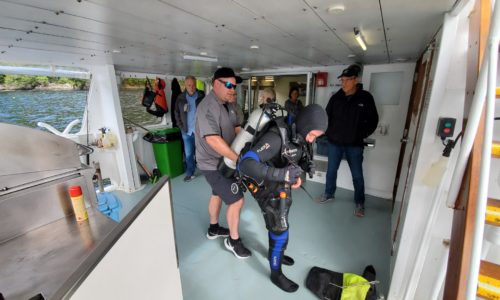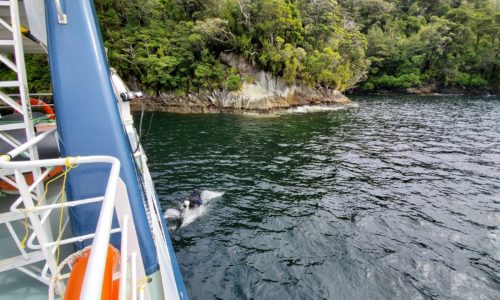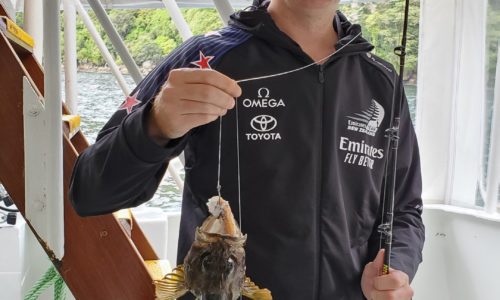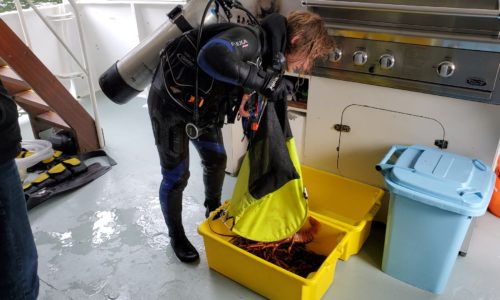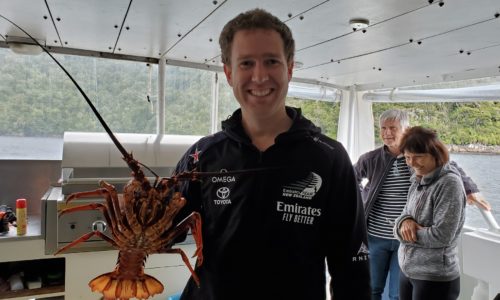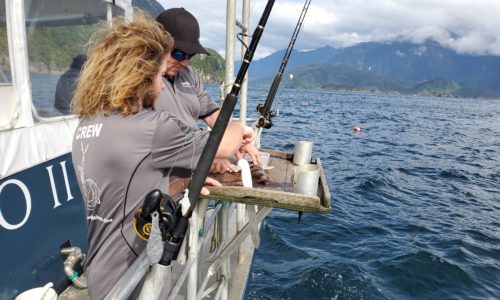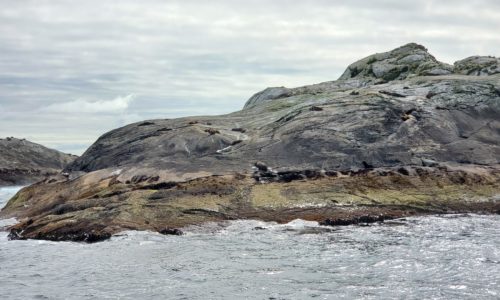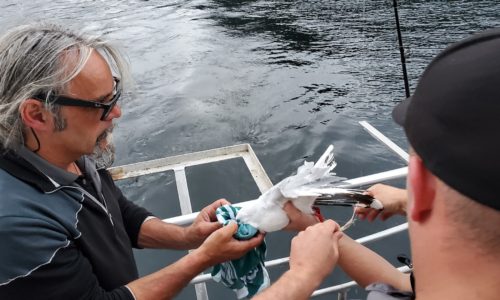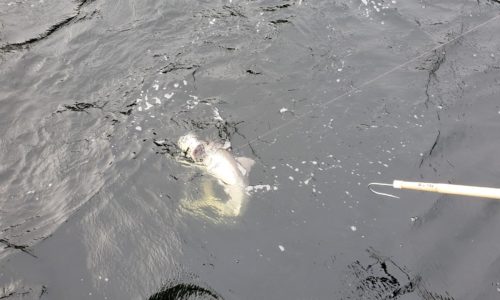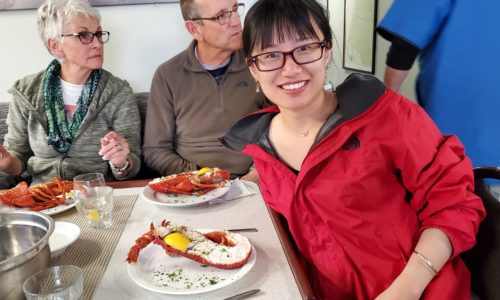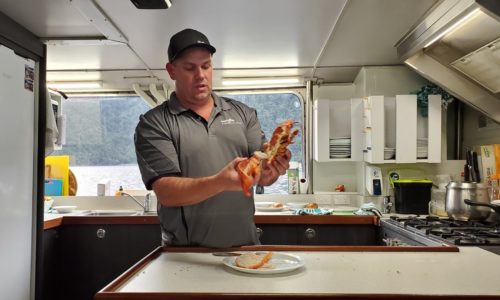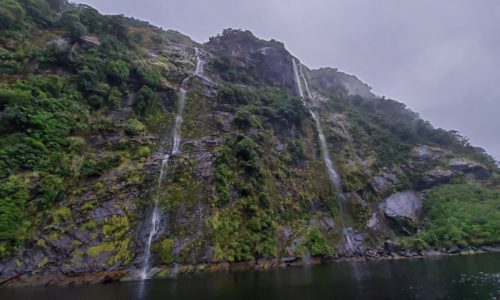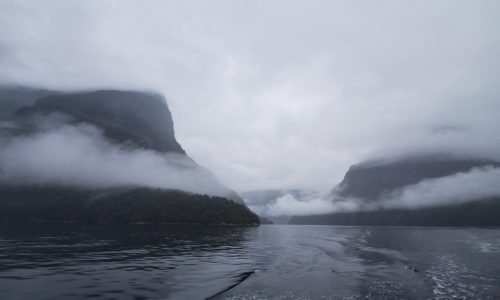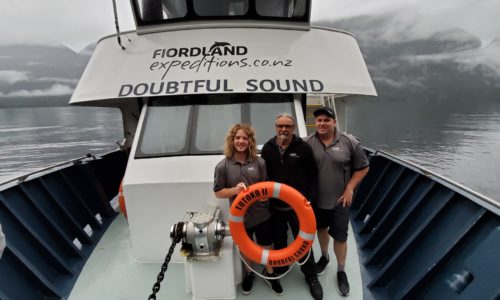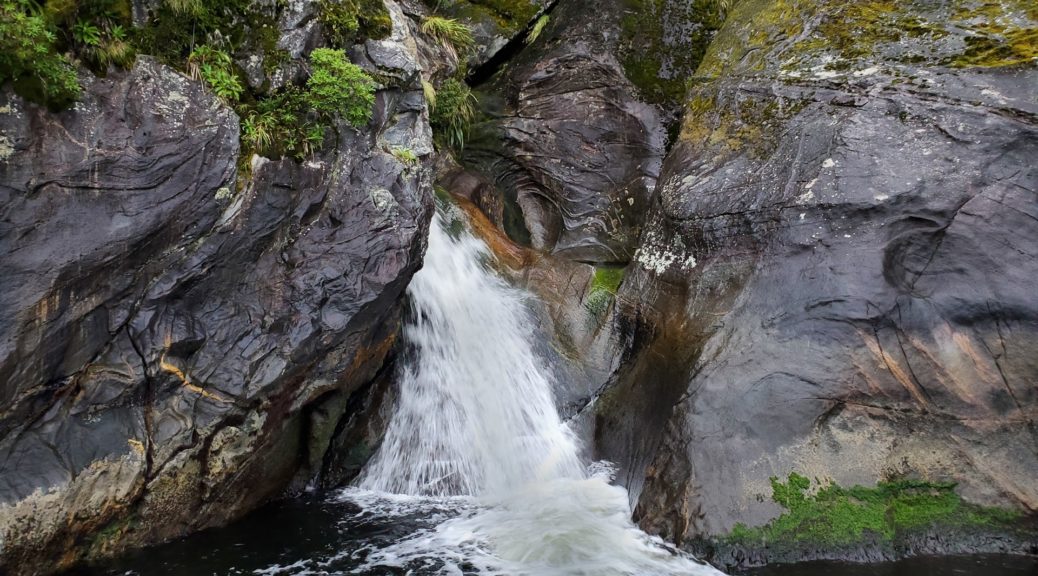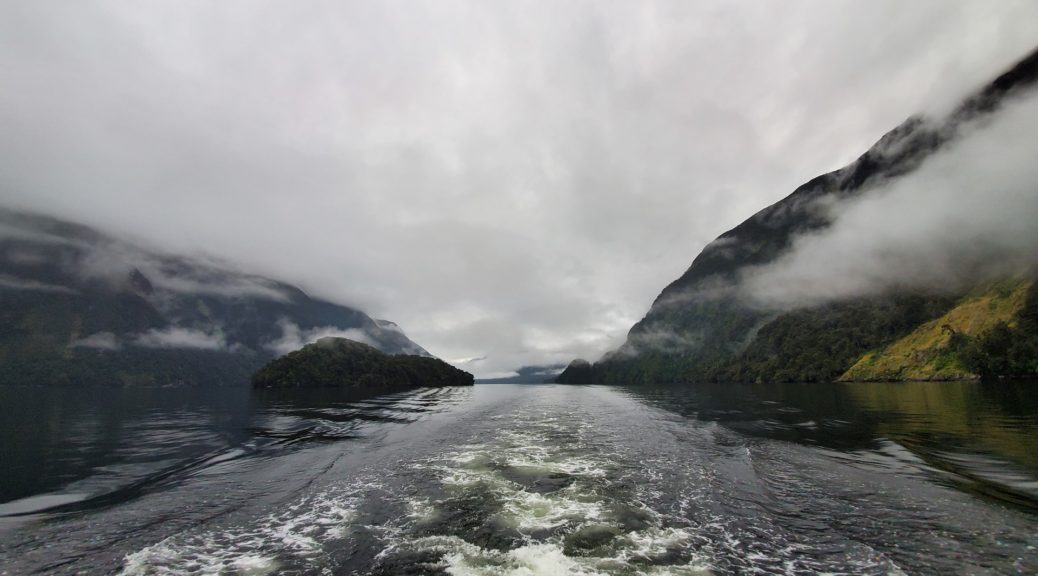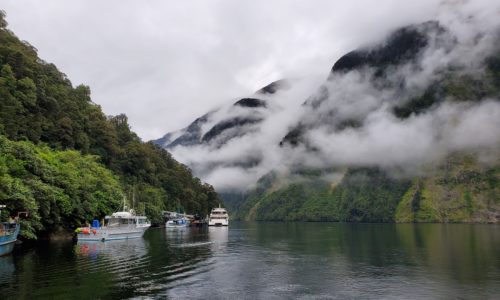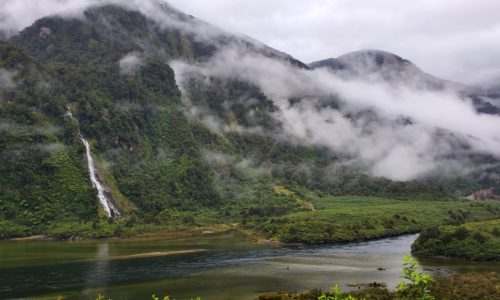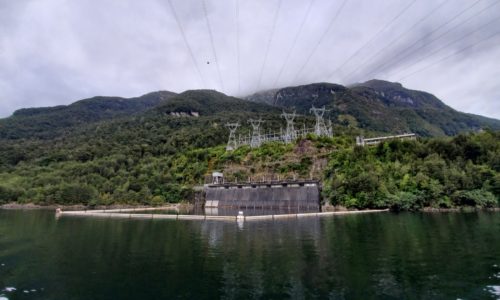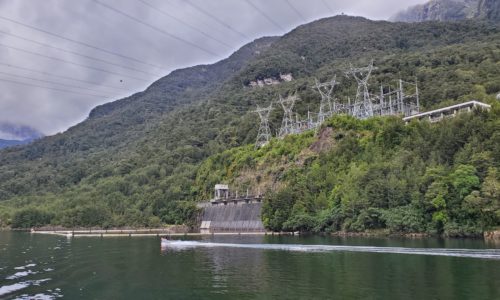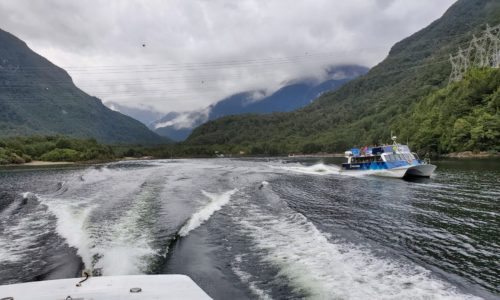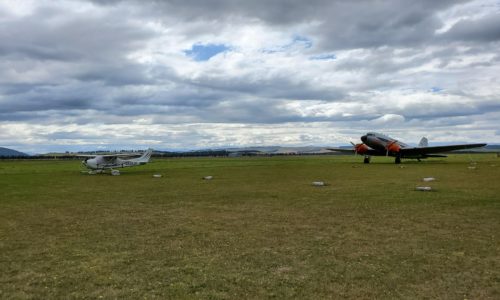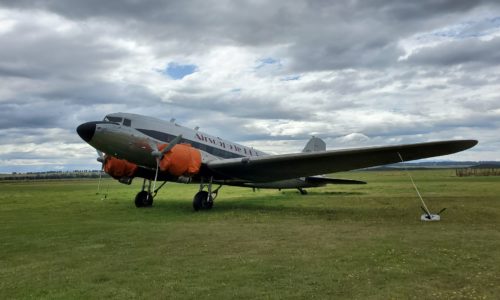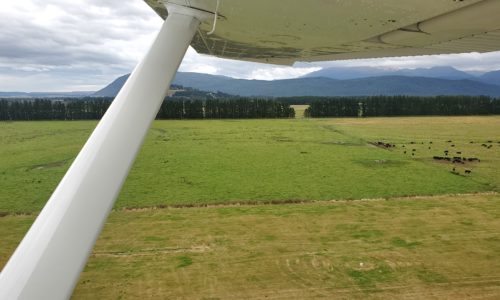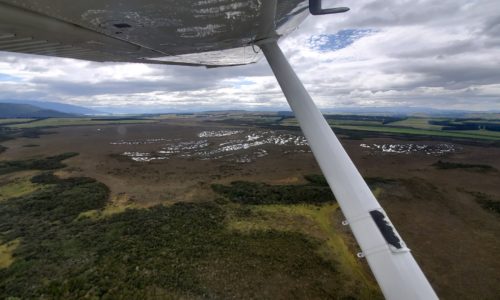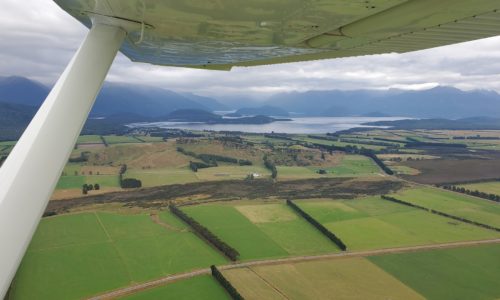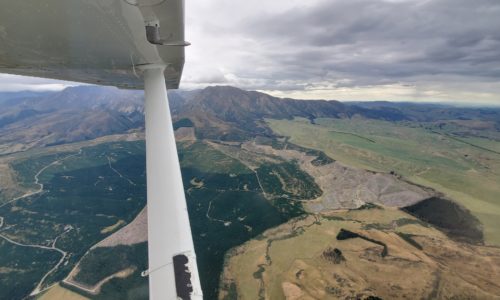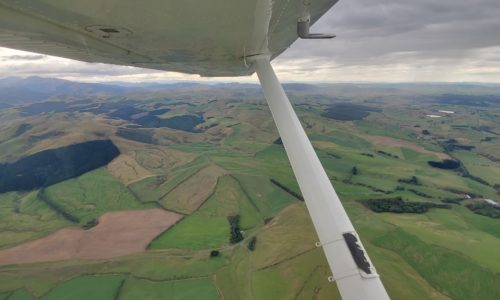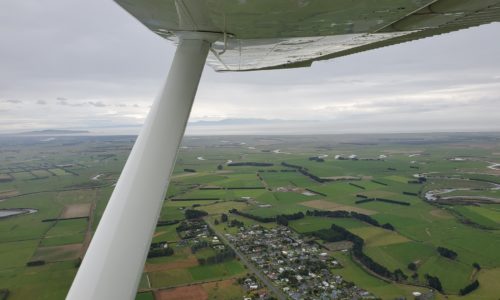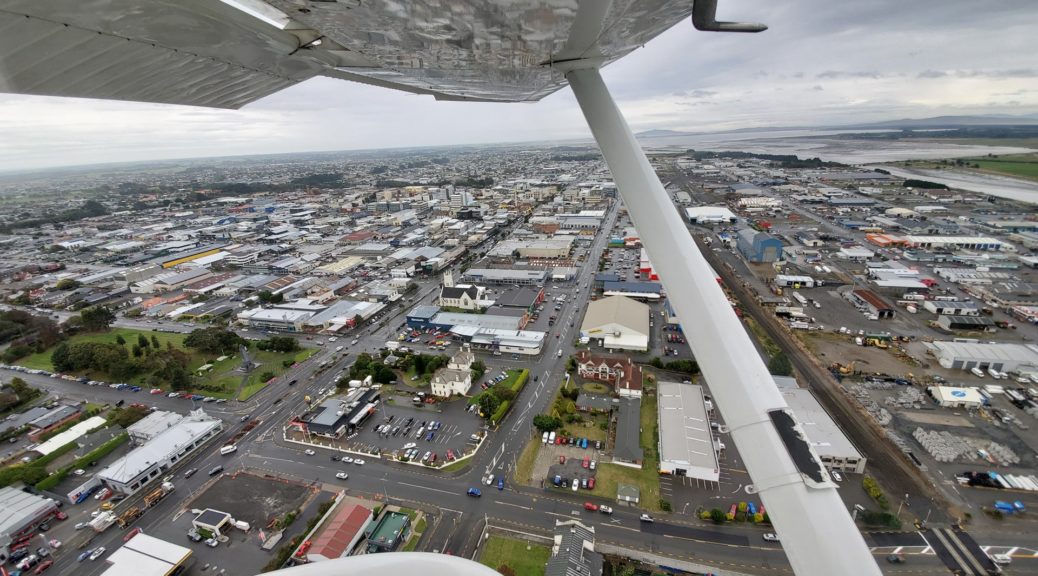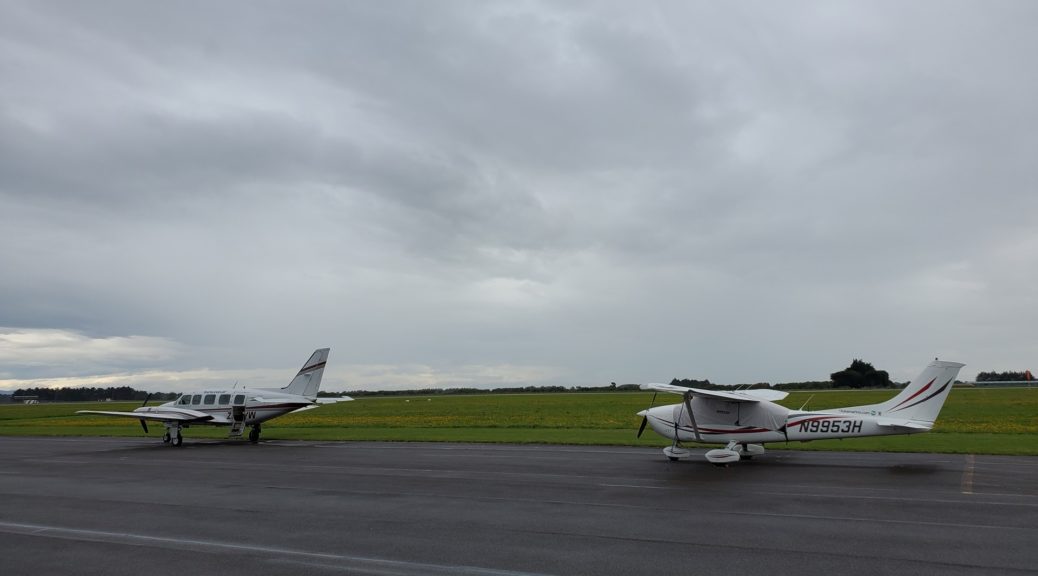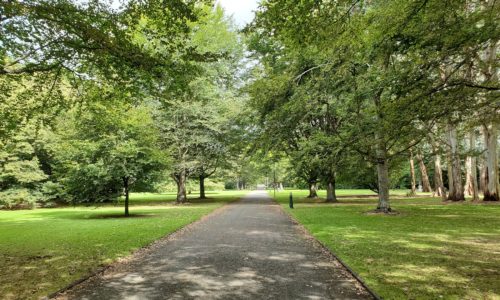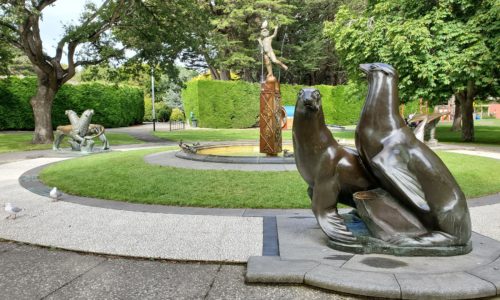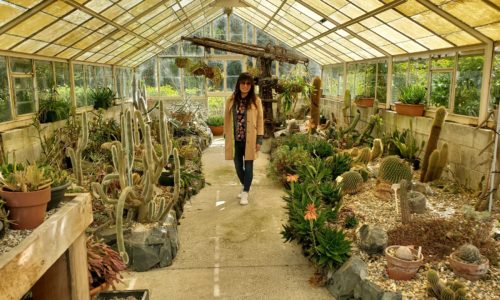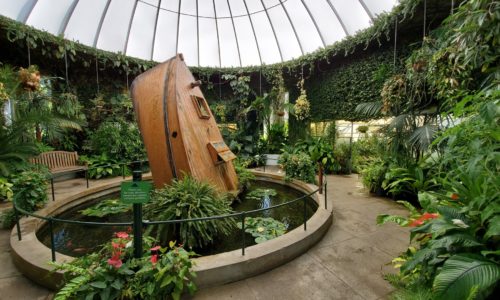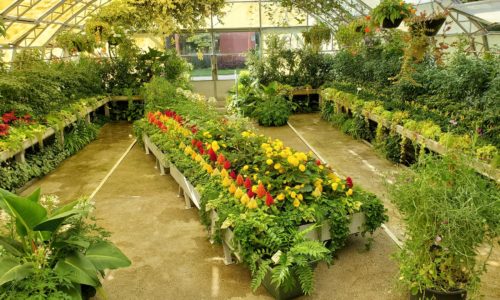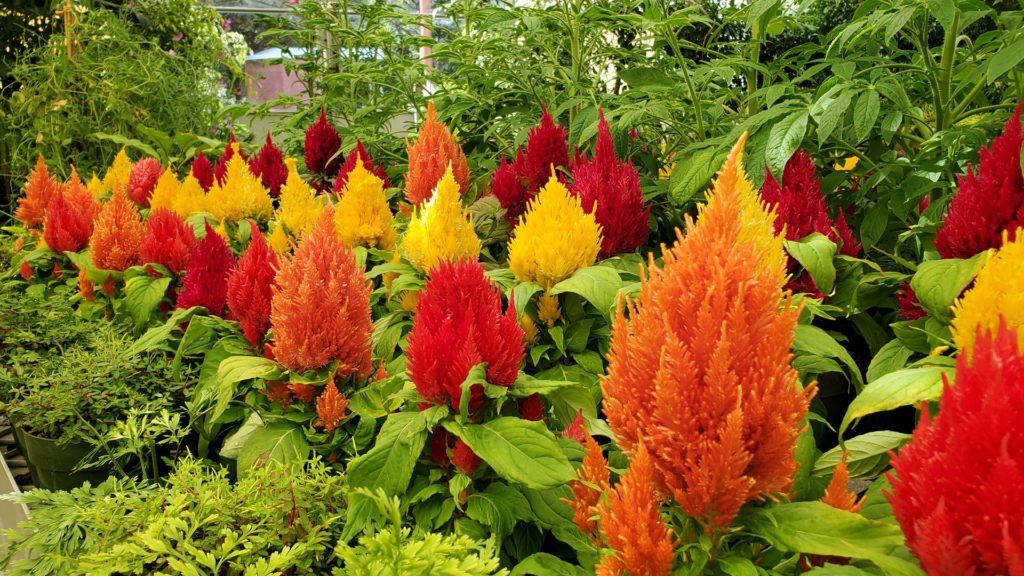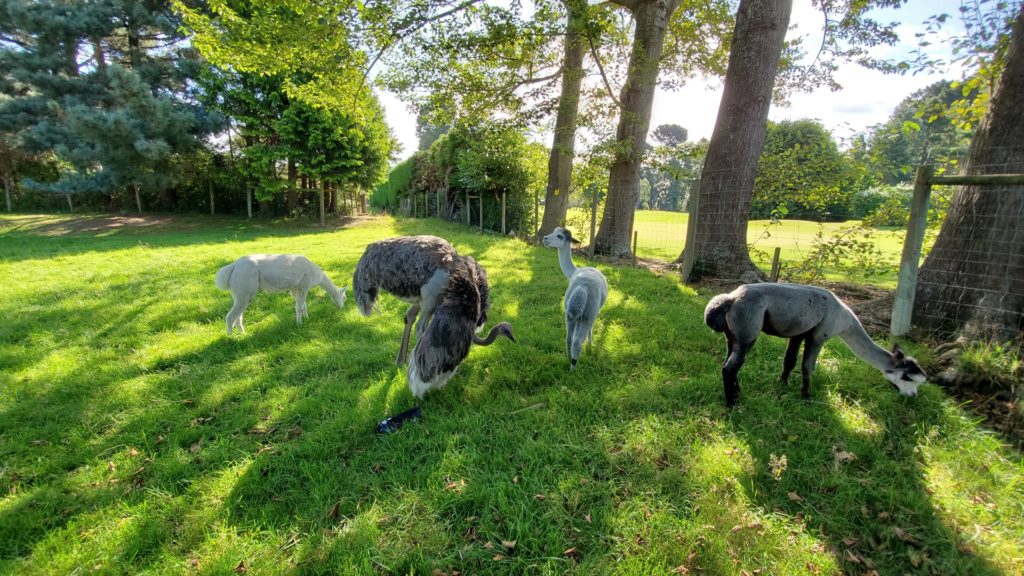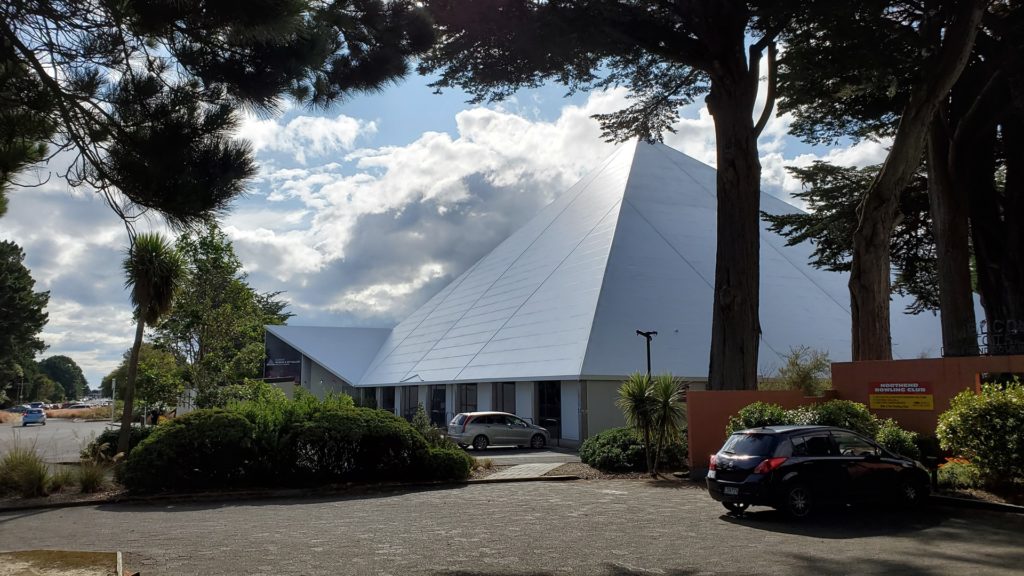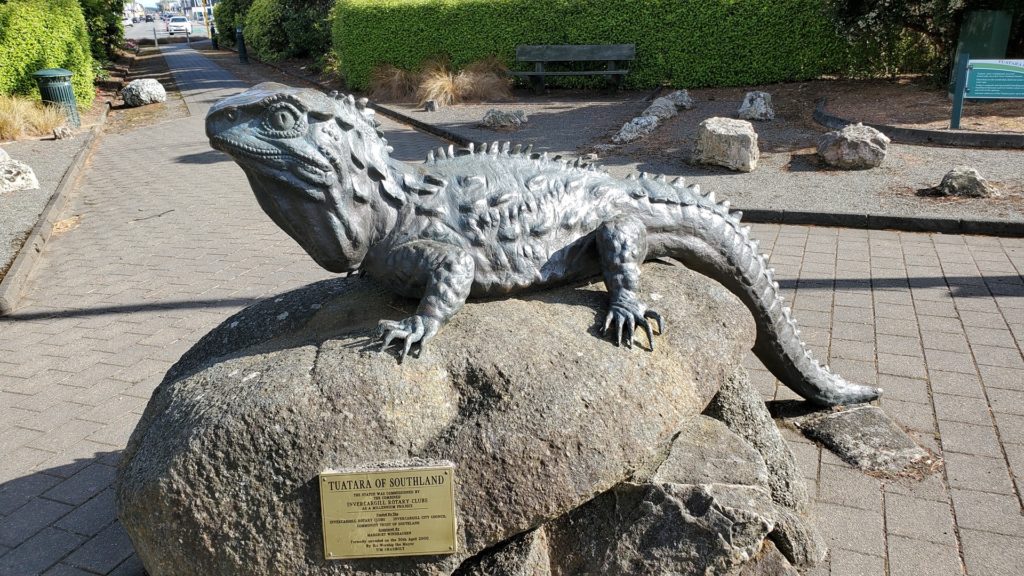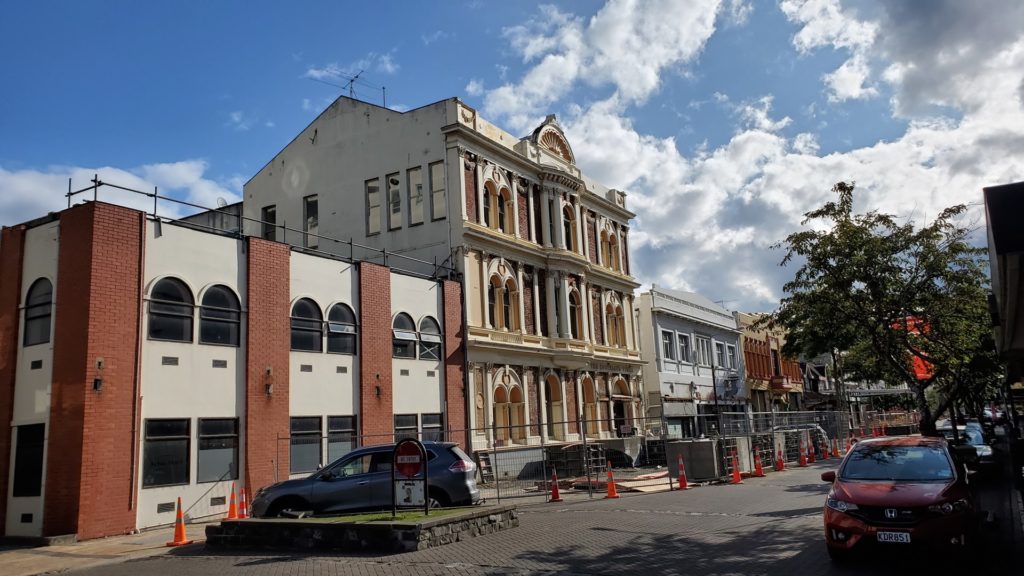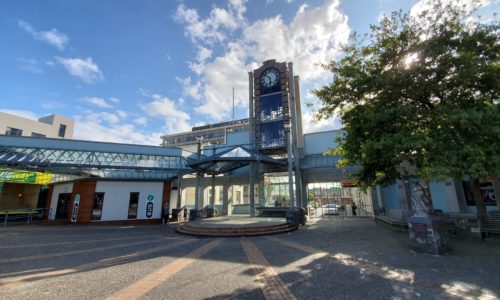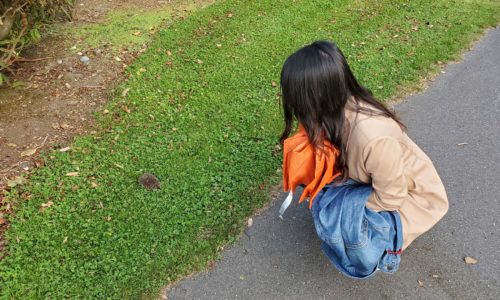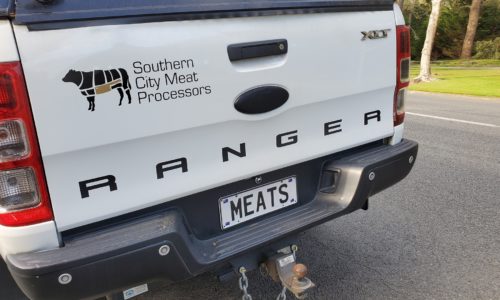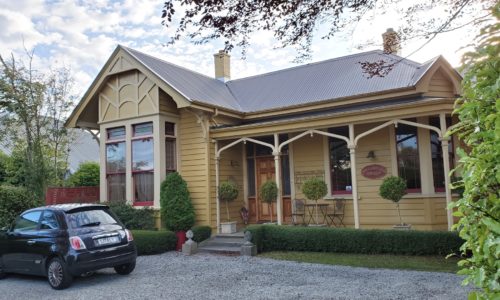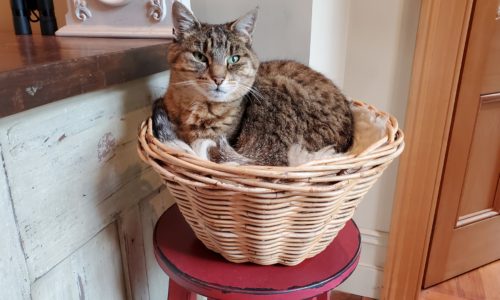Round the World – New Zealand Days 21 and 22
We had to be in Manapouri for 9am so it was an early start in Queenstown to catch a taxi to the airport. Elsa very helpfully went down to breakfast and collected food for me, so I could sleep a little longer! We had to wait a while to get someone to open the security gate, but once we did it didn’t take us long to load up the aircraft, pre-flight, and get on our way. There was a low overcast over the airport itself but conditions were more than good enough to head out over the lake to where the cloud lifted, and climb away.
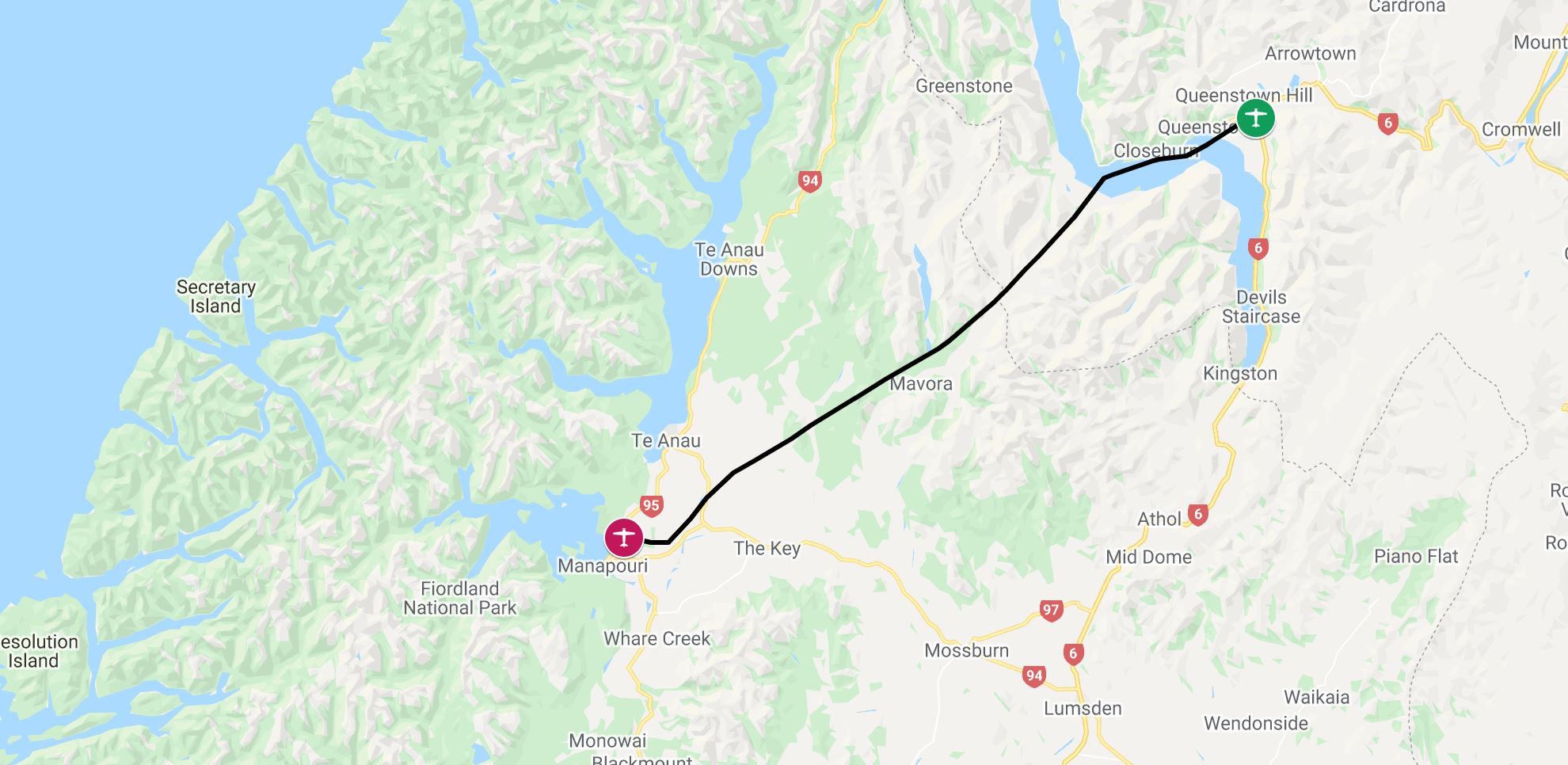
The flight was short, and the weather was great. The view of the Southern Alps out to our west was beautiful as always, and there was some interesting contrast with the more rolling hills and lower peaks of the central South Island. As we approached Manapouri we had great views of Lake Manapouri, which we’d soon be crossing by boat. The reason for our visit to this particular airport was to take part in an overnight cruise on Doubtful Sound, and the tour organiser had offered to pick us up from Manapouri airport on her way to the quay.
We landed and got directions from a local pilot to visitor parking, next to a DC3. I covered up the aircraft and we headed in to the terminal to wait for Mandy, who arrived not long later in the Firodland Expeditions truck and gave us a lift down to the first boat. We’d be taking this across Lake Manapouri, transferring to a minibus, and then riding that across the pass to join the boat for the overnight trip. At the quay, we met the 6 others we’d be sharing the cruise with; 2 retired doctors and their wives from the USA, and a couple from New Caledonia. They all turned out to be great company!
We shared the first boat ride, across the lake, with visitors for other boat tours as well as a party of electricians who were going to carry out some work on the large hydro-electric power plant at the other side of Lake Manapouri. This power plant is quite a feat of engineering; it takes water in at lake level, directs it down giant underground pipes to a turbine hall 200 meters below the surface, and after being used here to generate power the water exits down two 10-kilometer long underground tail-race tunnels into Doubtful Sound. It’s the largest hydro-electric power plant in New Zealand, able to generate more than 800MW of power. A large amount of this power is used to power an aluminium smelter.
At the visitor center near the power plant we met up with one of our three boat crew, Jimmy. He guided us over the pass, stopping at a viewpoint to enjoy the first views of Doubtful Sound, and kept up a fascinating commentary on the history of human activity in the area. We descended the other side of the pass and arrived at our vessel, the Tutoko II. We were met on arrival by Captain Jason and Cody, the other members of the three man crew. We carried our limited luggage aboard and soon we were on our way.
Two other passengers had failed to turn up, so there were only eight passengers on the 16-person capacity vessel. This made for a relaxed and intimate atmosphere. We settled into our cabins before having a safety briefing and some welcome champagne as Captain Jason skippered us out into the sound. The views were every bit as stunning as we’d been led to believe.
We first stopped about half way along the sound towards the sea, for a little kayaking. Only three of us decided to brave the cold and go out in kayaks, and we spent a little time exploring the shoreline and taking the chance to get a few photographs of the boat. While we paddled the others tried their hands at some fishing; nothing very big was caught, but they did manage to bring in a few fish to use as bait for later! Before too long we recovered the kayaks, and started heading further out towards the mouth of the sound.
We stopped next near the shoreline, not far from the mouth. Cody, one of the crew, donned his SCUBA gear and plunged into the water while the rest of us fished with about the same amount of success as earlier. Cody returned a while later with a bag bulging with enormous crawfish, destined for the first course of that evening’s dinner! We pulled in the lines, and headed further out towards the sea, stopping for a while to view a seal colony on the rocks near the mouth. It was pretty choppy though, and Elsa discovered that she suffers from sea-sickness, so before long we all agreed to head back in for one last go at fishing.
We started to get numerous heavy bites on the fishing lines at our final fishing spot. Every time we came close to reeling in the prize, though, the line would break and the quarry would get away. The gentleman from New Caledonia was particularly affected by this, getting by far the most bites and by far the most subsequent escapes. Eventually he triumphed and reeled in a large “Grey Boy” shark, very common around New Zealand and one of the few shark species that’s good for eating. He was heartily congratulated by all for finally winning the fight, and providing the main course of the dinner!
Having enjoyed an excellent three course meal courtesy of chef Jimmy, we motored over to our night’s mooring position near one of the many waterfalls. We drifted off to sleep to the sound of the falling water, and nothing else.
After a peaceful night’s sleep we woke to find very different conditions to the day before. A low overcast had descended over the sound, the tops of the cliffs on either side disappearing up into the cloud, and a light drizzle was falling. It was colder, too. Jimmy had cooked a hearty breakfast, and I took full advantage of the availability of “Weetbix”, an excellent cereal that only seems to be available down under. While we ate, Cody was busy cleaning the rooms; it would clearly be a fast turnaround once we made it back to the dock, ready for the next passengers.
We cruised back along the sound, stopping occasionally to admire waterfalls, before ending up back at the mooring. Jimmy drove us back over the pass in the van, pausing first to look over the outflow into the sound of the hydroelectric plant’s tail race. The final stop was to look out from the same viewpoint as we’d visited on the way in; the view was quite different today!
We were dropped off back at the visitor center and were soon back on the boat across Lake Manapouri to the town, where we said our goodbyes to our overnight friends. Mandy met us once again and drove us back to the airport to head off to our next destination.
We took off and headed south east towards Invercargill. The overcast and mist seemed to be confined to the Fiordland area, so we had mostly clear skies as we crossed the rolling agricultural fields of Southland. This was the first time either of us had been this far south, and it was exciting to see a whole new part of New Zealand.
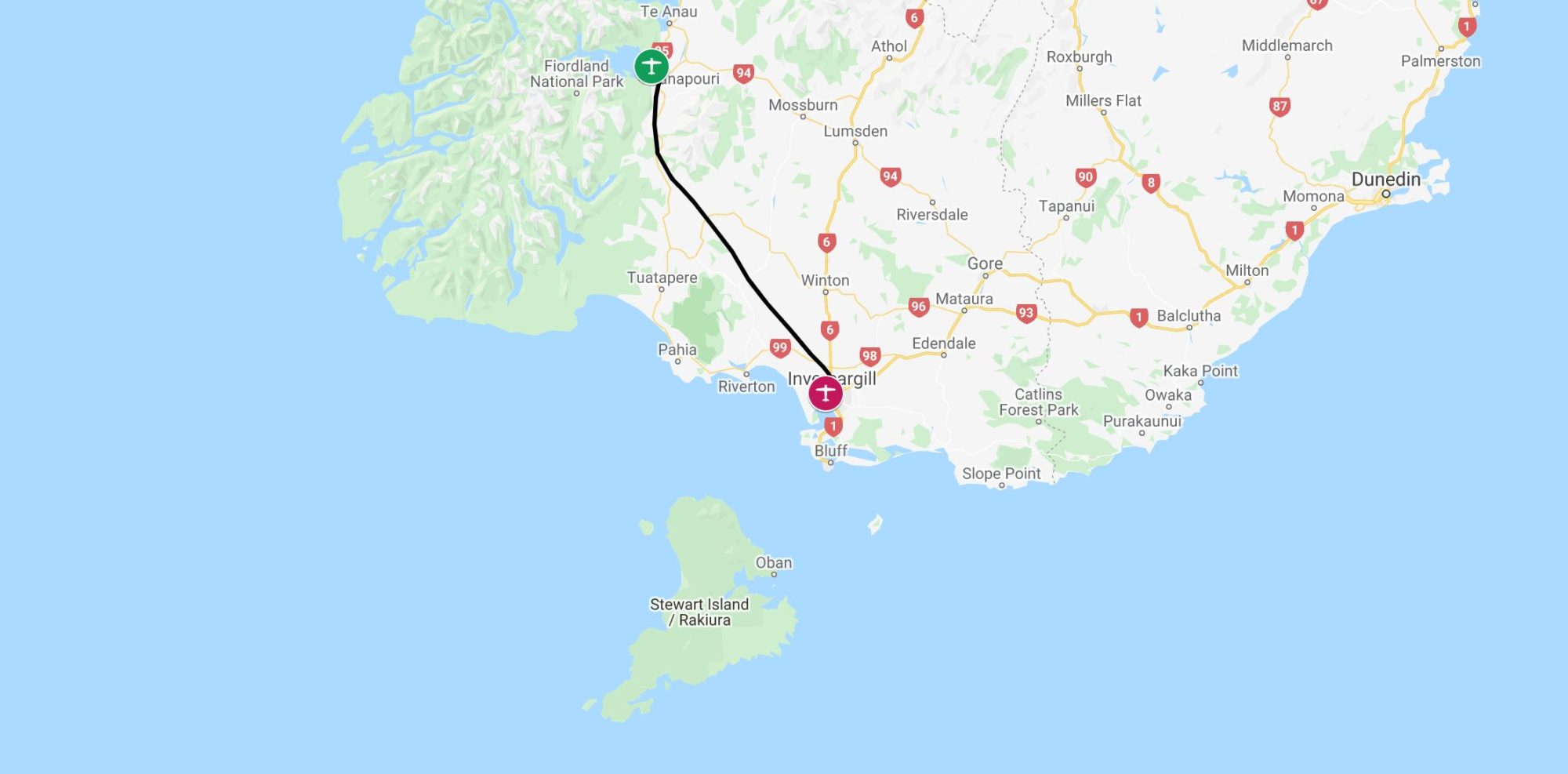
Invercargill tower cleared us to land straight in, bringing us in over downtown for a good view of the city center. They gave us direction to visitor parking down one end of the apron. We unloaded and hauled our bags over to the main terminal to catch a taxi to the bed and breakfast. Before leaving I stopped into the office of the airline servicing Stewart Island; our first stop the next day would be their private airstrip, so I had arranged to visit and get a quick briefing on the procedures. They were welcoming, and everything seemed fairly straightforward!
Part of the reason for visiting Invercargill was its use as an ending point in the excellent 2017 New Zealand movie “Pork Pie”, which I had thoroughly enjoyed, and I was hoping the city did not disappoint! We were staying at the “Villa Rouge”, a lovely little BnB that only has one guest room, so it’s a very peaceful and intimate experience. We were welcomed by Diana and Noel and spent a while settling in and relaxing before joining Diana for tea and some of her delicious homemade cake.
After tea and cake we headed out to explore the nearby Queens Park. This park is enormous, situated close to the center of town, and is beautifully maintained with a wide variety of different garden types. During our wanderings we checked out the main lawns, fountain, glass houses, rose garden, animal enclosures, native New Zealand garden, and even the “stumpery”. We had never heard of a stumpery. It turned out to be a garden created using all the dead trees and wooden off-cuts from around the rest of the park, and looked somewhat apocalyptic.
After our visit to the park we walked into downtown and explored a little. The city is small, and large areas of it were undergoing major renovations and rebuilding. We had dinner at a pleasant Thai restaurant before a relaxed walk back to the BnB. Being summer in the southern hemisphere it was still light well into the evening, and it was fun to look at all the beautifully maintained houses and front gardens that pepper the streets north of the city center.
Click here to read the next part of the story.






